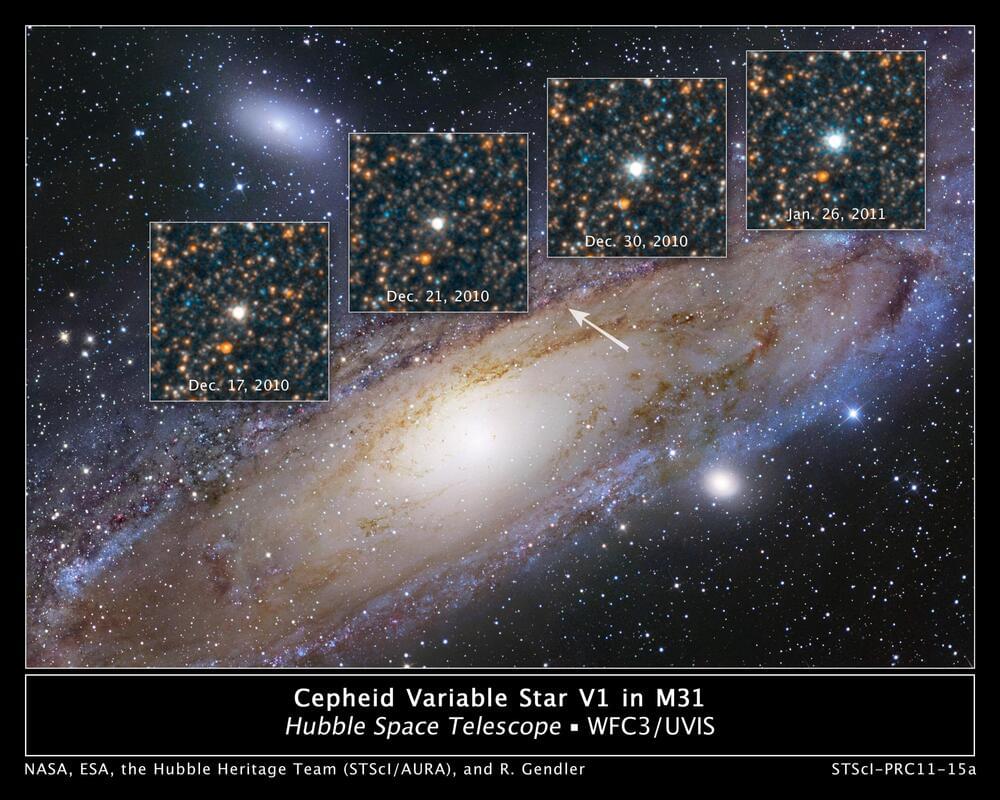For humans, the most important star in the universe is our sun. The second-most important star is nestled inside the Andromeda galaxy. Don’t go looking for it—the flickering star is 2.2 million light-years away, and is 1/100,000th the brightness of the faintest star visible to the human eye.
Yet, a century ago, its discovery by Edwin Hubble, then an astronomer at Carnegie Observatories, opened humanity’s eyes as to how large the universe really is, and revealed that our Milky Way galaxy is just one of hundreds of billions of galaxies in the universe ushered in the coming-of-age for humans as a curious species that could scientifically ponder our own creation through the message of starlight. Carnegie Science and NASA are celebrating this centennial at the 245th meeting of the American Astronomical Society in Washington, D.C.
The seemingly inauspicious star, simply named V1, flung open a Pandora’s box full of mysteries about time and space that are still challenging astronomers today. Using the largest telescope in the world at that time, the Carnegie-funded 100-inch Hooker Telescope at Mount Wilson Observatory in California, Hubble discovered the demure star in 1923. This rare type of pulsating star, called a Cepheid variable, is used as milepost markers for distant celestial objects. There are no tape-measures in space, but by the early 20th century Henrietta Swan Leavitt had discovered that the pulsation period of Cepheid variables is directly tied to their luminosity.









Leave a reply